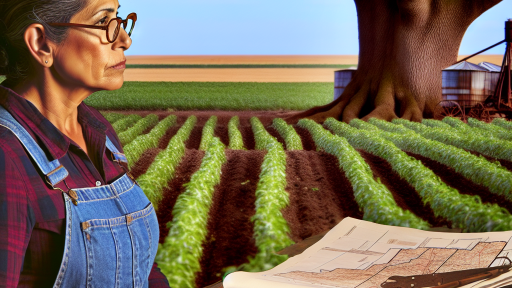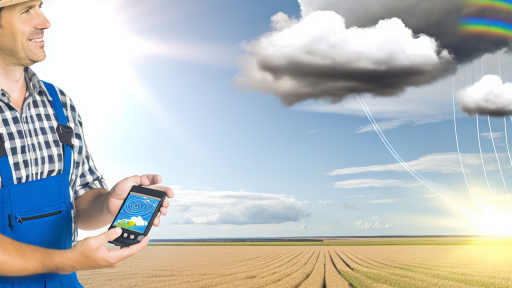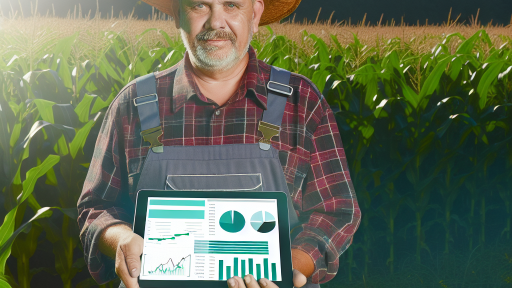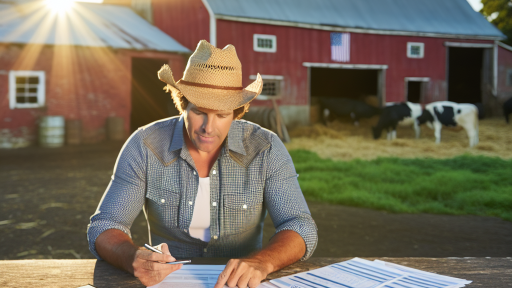Overview of Drone Technology in Agriculture
Introduction to Drones
Drones have transformed the agricultural landscape over recent years.
They provide innovative solutions for crop monitoring and management.
By utilizing advanced technology, farmers can enhance productivity efficiently.
Types of Drones Used in Agriculture
Several types of drones are commonly employed in agricultural practices.
- Fixed-wing drones cover large areas quickly.
- Multirotor drones offer precise maneuverability for smaller plots.
- Hybrid drones combine features of both fixed-wing and multirotor designs.
Benefits of Drones in Crop Management
Drones enable farmers to gather real-time data on crop health.
This data allows for informed decision-making about resource allocation.
Additionally, drones can reduce the need for manual inspections.
Key Technologies Integrated into Drones
Modern drones incorporate various advanced technologies.
- GPS technology ensures accurate navigation and mapping.
- Remote sensing captures real-time imagery of fields.
- Thermal cameras assess plant health by detecting stress levels.
Challenges of Drone Implementation
Despite their benefits, drone usage presents some challenges.
For instance, regulatory restrictions can limit operations.
Moreover, high initial costs may deter some farmers.
Training is also necessary to operate drones effectively.
Benefits of Using Drones for Crop Monitoring
Enhanced Data Collection
Drones provide an efficient way to collect data across large fields.
They capture high-resolution images and comprehensive data sets.
This information helps farmers assess crop health accurately.
Transform Your Agribusiness
Unlock your farm's potential with expert advice tailored to your needs. Get actionable steps that drive real results.
Get StartedConsequently, it allows for timely interventions when needed.
Cost Effectiveness
Utilizing drones reduces the labor costs associated with manual surveys.
Farmers can cover vast areas in a fraction of the time.
This improves productivity and overall operational efficiency.
Moreover, drones minimize resource waste, saving money long-term.
Improved Crop Management
Drones assist in precisely monitoring various crop stages.
They help identify issues such as pests and diseases early on.
With aerial imagery, farmers can develop targeted treatment plans.
Additionally, this leads to improved crop yields overall.
Data-Driven Decision Making
Access to real-time data enhances decision-making processes.
Farmers can make informed choices based on collected insights.
This feature allows for adjustments in crop management strategies.
Ultimately, it supports sustainable agricultural practices.
Environmental Benefits
Drones promote environmentally friendly farming practices.
They help reduce chemical use through targeted applications.
This reduces the impact on surrounding ecosystems and biodiversity.
Furthermore, efficient monitoring aids in promoting soil health.
Types of Drones Suitable for Agricultural Use
Fixed-Wing Drones
Fixed-wing drones excel at covering large areas quickly.
They can fly for longer durations than their multi-rotor counterparts.
This makes them ideal for mapping and surveying vast fields.
Farmers often choose these drones for their efficiency.
Multi-Rotor Drones
Multi-rotor drones are versatile and easy to operate.
They offer excellent maneuverability, which is essential for specific tasks.
Farmers use them for detailed inspections and targeted crop monitoring.
Showcase Your Farming Business
Publish your professional farming services profile on our blog for a one-time fee of $200 and reach a dedicated audience of farmers and agribusiness owners.
Publish Your ProfileThese drones can hover and capture images from various angles.
Hybrid Drones
Hybrid drones combine the features of fixed-wing and multi-rotor types.
They can take advantage of the strengths of both designs.
This allows for both long-range flight and precise maneuvering.
Farmers appreciate the flexibility they provide for multiple applications.
Data Gathering Drones
Data gathering drones often come equipped with advanced sensors.
These sensors help in assessing crop health accurately.
This data is critical for informed decision-making.
Farmers can address specific issues before they escalate.
Camera-Equipped Drones
Camera-equipped drones capture high-resolution images and videos.
They provide detailed insights into field conditions.
Farmers can monitor growth patterns through visual data.
Additionally, they allow for easy documentation and analysis.
Discover More: Strategic Alliances In Modern Sustainable Agriculture
Data Collection and Analysis Techniques with Drones
Introduction to Drone Technology
Drones revolutionize agricultural practices by enhancing data collection.
They provide critical insights into crop health and field conditions.
Farmers utilize this technology to improve their management strategies.
Types of Data Collected
Drones gather various types of data during flights.
One key type is multispectral imagery.
This imagery captures data beyond the visible spectrum.
It helps assess plant health, moisture levels, and nutrient content.
Another type includes thermal imaging.
Thermal data reveals temperature variations across fields.
This information can indicate irrigation needs and plant stress.
Additionally, drones can collect aerial photographs of fields.
These images assist in mapping and monitoring crop growth.
Data Analysis Techniques
Analyzing drone-collected data is crucial for effective decision-making.
Several software solutions aid in processing this data.
GIS (Geographic Information Systems) software maps spatial data.
This mapping helps visualize crop health and yield potential.
Machine learning algorithms analyze patterns in data.
These algorithms can predict future crop performance.
Furthermore, data analytics provides insights on pest and disease management.
Integrating Data into Farm Management
Integrating drone data into farm management systems enhances efficiency.
Farmers can create targeted action plans based on insights.
For instance, they can apply fertilizers only where needed.
This approach reduces waste and improves yield.
Additionally, implementing real-time monitoring can help detect issues early.
Farmers can respond quickly to changes observed from drone data.
Challenges and Considerations
Despite the benefits, some challenges exist with drone use in agriculture.
Showcase Your Farming Business
Publish your professional farming services profile on our blog for a one-time fee of $200 and reach a dedicated audience of farmers and agribusiness owners.
Publish Your ProfileWeather conditions can impact drone flight and data quality.
Moreover, farmers must understand how to analyze drone data effectively.
Training and education can mitigate these challenges.
Finally, adherence to regulations regarding drone usage is vital.
Farmers must ensure compliance to avoid legal issues.
Gain More Insights: Understanding Global Supply Chains in Agribusiness
Integrating Drone Data with Farm Management Software
Understanding Drone Data
Drones provide valuable data for precision agriculture.
This data includes imagery and sensor measurements.
Farmers can use it to evaluate crop health.
Additionally, drone data helps in mapping field variations.
Choosing the Right Software
Selecting compatible farm management software is crucial.
The software should integrate easily with drone technology.
Look for features that support data analytics and visualization.
Popular options include AgLeader and Climate FieldView.
Data Integration Process
Integrating drone data involves several steps.
First, upload the drone data to the software.
Next, clean and preprocess the data for analysis.
Finally, correlate the data with farming operations.
Benefits of Data Integration
Integrating drone data enhances decision-making capabilities.
It increases operational efficiency on the farm.
Moreover, farmers can identify problem areas quickly.
This approach ultimately leads to improved crop yields.
Case Study: GreenField Farms
GreenField Farms successfully integrated drone data in 2022.
They partnered with AgroTech Solutions to streamline their process.
As a result, they observed a 25% increase in yield.
Additionally, they reduced input costs by 15%.
Challenges and Solutions
Integrating drone data may pose some challenges.
Data overload can occur if not managed properly.
To overcome this, establish clear data management protocols.
Additionally, train staff to interpret drone data effectively.
Learn More: Essential Steps for Successful Farm Succession
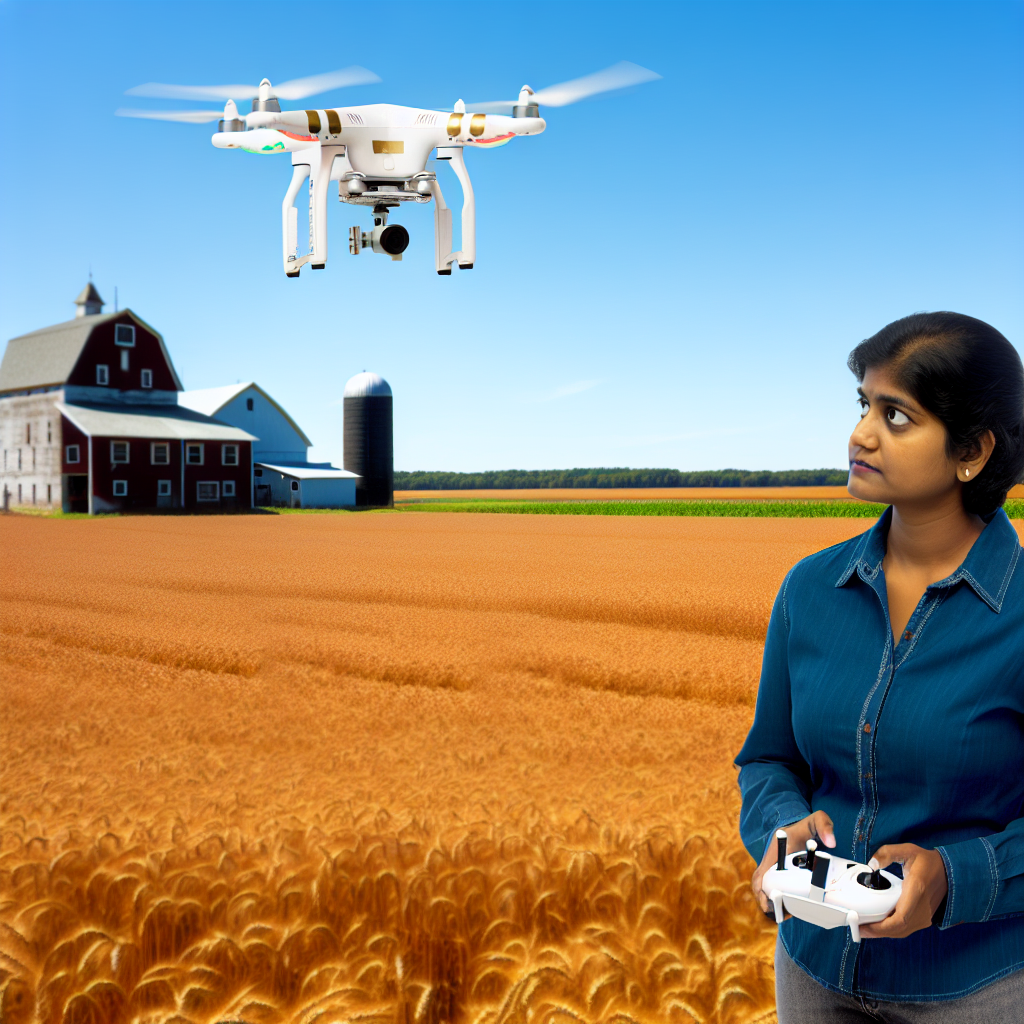
Case Studies of Successful Drone Implementation in Farming
Early Adoption in California Vineyards
In California, vineyards have embraced drone technology to monitor crop health.
Harvest Crops, a local vineyard, implemented drones for precise pesticide application.
This method reduced chemical use while improving grape quality.
The data gathered by drones helped to identify specific areas needing attention.
As a result, the vineyard increased yields and reduced costs significantly.
Innovative Approaches in Florida Citrus Farms
In Florida, citrus farms utilize drones for early disease detection.
Citrus Innovations partnered with drone manufacturers to enhance monitoring capabilities.
By capturing high-resolution images, farmers detect diseases before visible signs appear.
This proactive approach has minimized crop losses and boosted overall productivity.
Showcase Your Farming Business
Publish your professional farming services profile on our blog for a one-time fee of $200 and reach a dedicated audience of farmers and agribusiness owners.
Publish Your ProfileThe collaboration has also provided valuable insights into best farming practices.
Drone Technology in Midwestern Corn Production
Midwestern farms have leveraged drone technology for precision agriculture.
Agricultural Solutions, a firm in Iowa, incorporates drone data into its operations.
Drones provide valuable information on soil moisture and nutrient levels.
This data enables farmers to make informed irrigation and fertilization decisions.
Consequently, they optimize their resources and enhance corn yields.
Enhancements in Remote Livestock Monitoring
Farmers in Texas have also adopted drone technology for livestock management.
Ranchers utilize drones to monitor grazing patterns and assess herd health.
This technology reduces the time required for manual checks across large areas.
As a result, ranchers can address issues before they escalate into serious problems.
Drones have streamlined operations and improved overall herd management.
Environmental Benefits and Future Prospects
Implementing drones in agriculture not only boosts productivity but also enhances sustainability.
Farmers report improved environmental practices through precise application methods.
Furthermore, these advancements pave the way for future innovations in farming.
As technology continues to evolve, the agricultural sector stands to benefit even more.
The success stories across different regions confirm the potential of drone integration.
Learn More: SEO Tips for Agribusiness E-commerce Sites
Regulatory Considerations for Drone Use in Agriculture
Understanding Current Regulations
Farmers must adhere to specific regulations when using drones.
These regulations ensure safe operation in agricultural settings.
The Federal Aviation Administration (FAA) governs drone use in the United States.
Compliance with FAA guidelines is essential for all drone operators.
Additionally, local regulations may impose restrictions.
Farmers should check state and county laws concerning drone flying.
Some areas may have designated no-fly zones over private properties or wildlife reserves.
Obtaining Necessary Licenses
Operators must obtain the appropriate licenses to operate drones legally.
The FAA requires commercial drone operators to have a Remote Pilot Certificate.
This certification demonstrates knowledge of regulations and safe operation procedures.
Furthermore, operators may need to complete specific training programs.
These programs can help ensure compliance with industry standards.
Regular updates to knowledge are also crucial as regulations evolve.
Data Privacy and Security
Farmers must consider data privacy when using drones for crop management.
Drones collect various types of data, including images and geographical information.
This data may contain sensitive information about farming practices.
To protect privacy, operators should familiarize themselves with privacy laws.
There are regulations governing the collection and use of personal information.
Compliance will ensure that data collection methods respect the rights of others.
Insurance and Liability Considerations
Farmers should also explore insurance options for drone operations.
Liability insurance protects operators in case of accidents or property damage.
Such coverage can provide financial support against unexpected incidents.
Additionally, understanding coverage limits is vital.
Showcase Your Farming Business
Publish your professional farming services profile on our blog for a one-time fee of $200 and reach a dedicated audience of farmers and agribusiness owners.
Publish Your ProfileEach insurance policy will vary in terms of coverage and exclusions.
Operators must assess their needs to select the best insurance policy for their circumstances.
Future Regulatory Changes
The regulatory landscape for drones is rapidly evolving.
Farmers should stay informed about potential changes to regulations.
Engaging with local agricultural associations can provide valuable insights.
Moreover, attending industry conferences can help track trends in drone regulations.
Networking with experts can also offer guidance on compliant practices.
Future Trends in Drone Technology and its Impact on Agriculture
Advancements in Drone Sensing Technology
Drone sensors are evolving rapidly.
These sensors can capture multispectral and hyperspectral images.
Farmers can use this data for precise assessments of plant health.
This capability enhances decision-making processes significantly.
Integration of AI and Machine Learning
Artificial intelligence is shaping drone technology effectively.
AI algorithms analyze vast amounts of data collected by drones.
This analysis predicts crop yields and identifies potential threats.
Machine learning models continuously improve with more data.
Farmers will benefit from personalized recommendations for their fields.
Reduced Costs and Increased Accessibility
Tighter budgets push farmers to seek cost-effective solutions.
Drone technology is becoming more accessible and affordable.
Many service providers now offer drone-as-a-service options.
This trend allows small farmers to utilize advanced technology easily.
Regulatory Changes and Airspace Management
Drone regulations are evolving to improve agricultural applications.
Governments are likely to streamline processes for drone usage.
Eventual changes could lead to more open airspace for farmers.
These improvements will enhance the efficiency of agricultural monitoring.
Impact on Precision Agriculture
Drones are redefining the concept of precision agriculture.
Farmers can monitor crop health and soil conditions in real time.
This results in optimized water usage and tailored nutrient application.
Such practices lead to increased crop yields and resource conservation.
Future Training and Education Opportunities
As drone technology advances, training programs will emerge.
Farmers will need education on operating drones effectively.
Programs will also focus on analyzing drone data for improved outcomes.
Higher education institutions may offer specialized courses in this field.
Additional Resources
Precision Agriculture: Benefits and Challenges for Technology …

